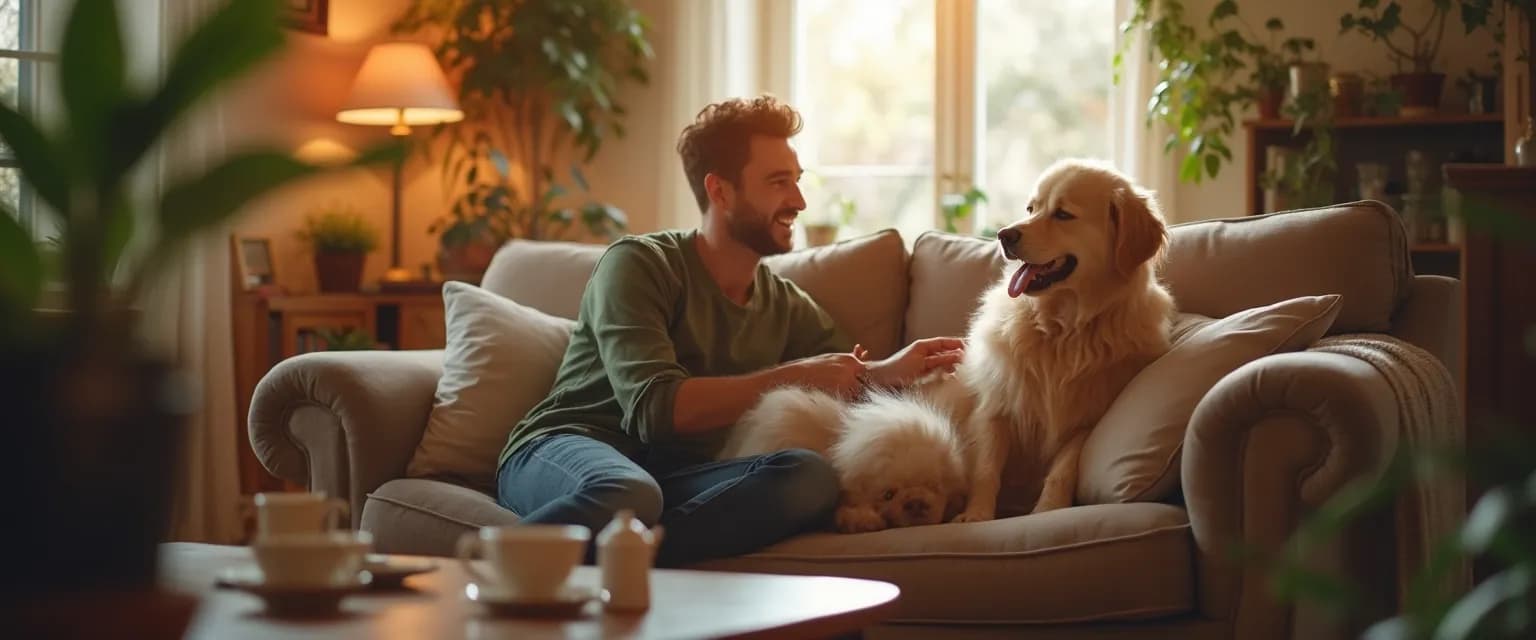5 Pet-Friendly Ways To Overcome Anxiety In Solo Living | Anxiety
Living alone offers independence and freedom, but it can also bring unique challenges to your mental wellbeing. The silence and solitude sometimes amplify feelings of anxiety in solo living, creating an emotional hurdle that's tough to overcome. This is where our furry, feathered, or scaled friends come in – pets provide remarkable emotional support that can transform your solo living experience. They offer unconditional love and companionship that helps combat the anxiety that sometimes accompanies living by yourself.
Research consistently shows that people experiencing anxiety in solo living situations benefit tremendously from animal companionship. Whether it's the gentle purr of a cat or the enthusiastic greeting of a dog, these interactions trigger positive biochemical responses in our brains. Let's explore five practical, science-backed strategies that leverage the power of pets to create a more balanced emotional environment when living alone.
How Pets Naturally Reduce Anxiety in Solo Living
The science behind animal companionship is fascinating. When you interact with a pet, your brain releases oxytocin (the "bonding hormone") while reducing cortisol (the "stress hormone"). This biochemical shift creates an immediate anxiety-buffering effect that's particularly valuable for those facing anxiety in solo living situations.
Beyond the chemical benefits, pets provide structure to your day. The routine of feeding, walking, or playing with your pet creates predictable anchors throughout your day. This routine helps combat the feeling of aimlessness that can intensify anxiety in solo living environments.
Physical touch with pets also provides significant benefits. Stroking a cat or dog lowers blood pressure and heart rate – physiological changes that directly counter anxiety symptoms. This tactile connection satisfies our fundamental need for touch, which is often lacking when implementing anxiety management techniques while living alone.
5 Practical Pet Strategies for Managing Anxiety in Solo Living
Here are five effective anxiety in solo living strategies that incorporate pet companionship:
- Strategic Play Sessions: Schedule 10-15 minute play sessions with your pet during potentially anxious times. The physical activity and focus required disrupts anxiety cycles while boosting mood-enhancing endorphins.
- Bedtime Bonding Routine: Create a consistent evening ritual with your pet to signal your brain it's time to relax. This might include gentle grooming or quiet time together, helping ease insomnia often associated with anxiety in solo living.
- Pet-Assisted Mindfulness: Practice being present by focusing on your pet's breathing or movements. This simple mindfulness technique pulls you out of anxious thought spirals.
- Virtual Pet Options: If housing restrictions prevent pet ownership, consider virtual alternatives like volunteering at animal shelters or using pet-sitting services to get regular animal interaction without full-time responsibility.
- Community Pet Engagement: Join dog-walking groups or pet-centered community activities to combine the benefits of animal interaction with social connection – addressing multiple dimensions of anxiety in solo living.
Transform Your Solo Living Experience with Pet Companionship
Incorporating these pet-friendly strategies creates a powerful toolkit for managing anxiety in solo living situations. The combination of emotional connection, routine, and physical contact addresses multiple dimensions of anxiety simultaneously.
Start small by implementing just one of these techniques this week. Notice how your relationship with your pet (or community animals) shifts your experience of anxiety in solo living. Remember that consistency matters more than perfection – even brief daily interactions can significantly impact your emotional wellbeing when living alone.




